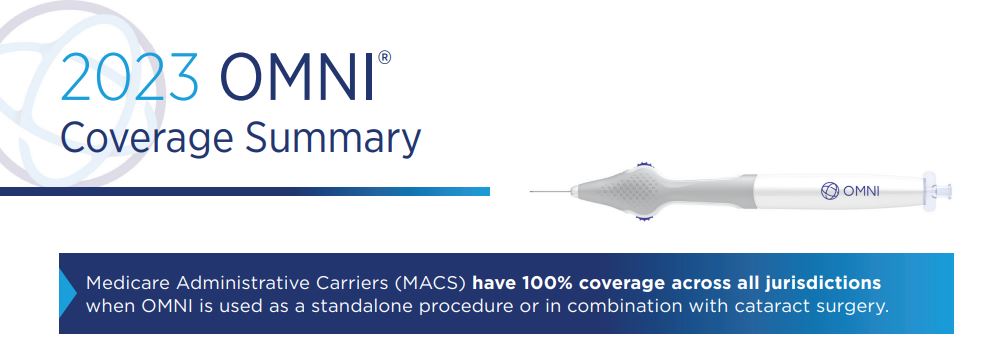
Glaucoma is a group of eye diseases characterized by damage to the optic nerve, often caused by increased intraocular pressure (IOP). OMNI® Surgical System for Microinvasive Glaucoma Surgery (MIGS) utilizes a microcatheterization technique, which involves the insertion of a small flexible catheter into the drainage angle of the eye. This allows surgeons to access targeted areas with precision to lower intraocular pressure. The microcatheter is designed to be minimally invasive, reducing the potential for trauma to the eye.
The procedure combines two distinct angle procedures – ab interno trabeculotomy (or goniotomy involving the opening of trabecular meshwork and inner walls of Schlemm’s canal) and transluminal viscoelastic delivery (involving dilation of the aqueous outflow canal also known as a canaloplasty). It is the only MIGS device that allows surgeons to target all three points of aqueous humor outflow resistance – trabecular meshwork, Schlemm’s canal and distal collector channels. It is designed to improve the aqueous outflow to better lower the intraocular pressure and reduce the need for medications.
Because of it’s safety and efficacy, Dr. Angelique Pillar uses the OMNI Surgical System in patients with Primary Open Angle Glaucoma (POAG) who require better control of their glaucoma during cataract surgery and also as a stand alone procedure, after cataract surgery to better control the intraocular pressure.
Please click here to visit the link to the Patient information video about the OMNI Surgical System
The OMNI was FDA approved in 2018 as a delivery system for a procedure that has been used for the past 80 years. The original goniotomy procedure was specifically used to help glaucoma in babies and children who can be born with a clogged drainage system in their eye. However, unlike the original goniotomy procedure, the Omni Surgical System employs transluminal viscoelastic delivery, which involves the controlled injection of a specialized gel-like substance into the eye. This gel helps to facilitate the treatment and provide stability during the surgical procedure. The device allows for precise placement and controlled delivery of the gel to targeted areas of the eye.
Surgery on the angle of the eye is called a canaloplasty when it allows fluid from the eye to better flow into the eye’s drainage channel (called Schlemm’s Canal). The Schlemm’s canal is responsible for draining the aqueous humor. By lowering the pressure in the eye, this procedure minimizes the risk of further vision loss from glaucoma.
Insurance Coverage: In 2023, OMNI is coverage by all Medicare Administrative Carriers in all jurisdictions. Although the procedure is covered by Medicare, United Healthcare and Cigna require a predetermination because OMNI is listed as not medically necessary on their medical policies. Anthem, Aetna, Blue Cross, Blue Shield, and Humana cover OMNI.

Eye Exam Tip: Prior to surgery, in order to visualize the drainage angle of the eye, your ophthalmologist must use a technique called gonioscopy. Gonioscopy is a diagnostic procedure using a specialized lens not typically done during routine eye exams to examine the iridocorneal angle of the eye. The iridocorneal angle is the area where the iris (colored part of the eye) meets the cornea (clear front surface of the eye). It is an essential area for the outflow of aqueous humor, the fluid that fills the front part of the eye.
Contraindications: The OMNI procedure is used in primary open angle glaucoma and cannot be used in patients with prior trauma with angle recession. It also cannot be used in neovascular glaucoma, chronic angle closure, narrow-angle glaucoma, or malignant glaucoma.
This article was originally written on 7/3/2020 by Angelique Pillar, MD and updated on 5/28/23.
